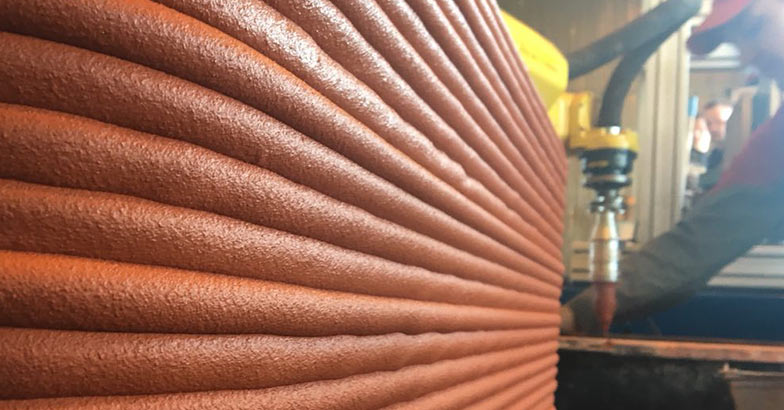 Apis Cor participates in NASA’s Phase III 3D-Printed Habitat competition to become the first to start construction on Mars
Apis Cor participates in NASA’s Phase III 3D-Printed Habitat competition to become the first to start construction on Mars
Apis Cor and SEArch+ participate in the contest "3D-Printed Habitat Challenge", organized by the US National Aeronautics and Space Administration. The main goal of the NASA competition is the promotion of additive technologies that are necessary to create an inhabited environment on Mars.
Reasons to colonize Mars
Taking into account the growth of the Earth's population, in the next 20 years we will have to build the same amount of housing as built in the previous 2000 years.
The population of the Earth is growing. And many scientists and inventors are already concerned with the question of how to act if one day the problem of overpopulation of the planet arises.
Printed test samples by Apis Cor
Mars is seen as one of the most suitable places where people can live in the future. But in order to realize the grandiose plan for the development and settlement of Mars, hundreds of accompanying tasks are to be solved - the flight of the colonizers, the delivery of building materials and earth cultures, the creation of a suitable habitat for man and much more.
Large private companies such as SpaceX, Blue Origin, Virgin Galactic Stratolaunch Systems, have long been engaged in the issue of interplanetary travel and have gone far ahead in this field. As for the potential of building the first houses on Mars, work in this direction is just beginning.
3D printing is the best solution for building on Mars
In order for pioneers to live and work on the red planet, it is necessary to create an environment that is comfortable for a person. And additive technologies are considered today as the most appropriate way of producing objects, things and resources for creating such an environment.
When people land on Mars, certain conditions must be created there. This means that the construction on Mars should be organized so that it takes place with minimal human participation and usage of local materials.
This is only possible if all construction equipment will be as automated as technically possible and ready to use local materials for printing.
Therefore, the main task of the "3D-Printed Habitat Challenge" contest is to activate the development and demonstrate the capabilities of stand-alone construction machines capable of creating a human habitat on another planet - with 3D printing technology based on both processed and local building materials.
Nikita Chen-ium-tai from Apis cor: The solution presented by Apis Cor meets most of the competitive requirements. But it's too early to relax. Nowadays we simultaneously work in two directions: developing a new solution for printing horizontal structures and special building mixtures for them. We already have a successful experience of printing houses on Earth - last year we printed the first house in Russia and want to move on. The NASA competition offers great opportunities for us. It's not just a meeting with like-minded people or sharing knowledge and ideas. This is a chance to apply our experience outside the planet and contribute to the implementation of the mission to develop Mars.
www.apis-cor.com